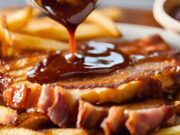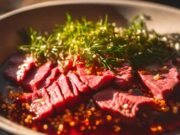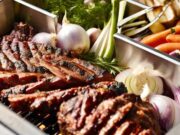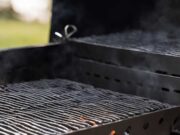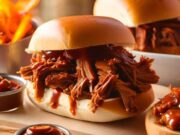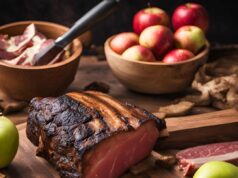BBQ smoking is more than just a cooking method; it is an art form that transforms ordinary meats into exquisite culinary masterpieces.
This guide will provide you with the essentials of BBQ smoking, including how to select the right equipment, choose the best woods and fuels, and prepare your meats for that ideal smoky flavor.
It will cover the entire smoking process and offer tips and tricks designed to enhance your skills.
Furthermore, it will discuss how to serve your delicious creations, ensuring that you fully enjoy every bite.
Prepare to elevate your BBQ smoking expertise to a professional level.
Key Takeaways:
- Low and slow is the key to mastering BBQ smoking. It allows for the perfect combination of tenderness and flavor in your meats.
- Choosing the right equipment and using the proper woods and fuels are crucial for achieving the perfect BBQ smoke.
- Preparation and patience are essential in the smoking process. Don’t rush and follow our tips and tricks for the best results.
Choosing the Right Equipment
Selecting the right smoker is essential for BBQ enthusiasts who aim to achieve the ideal balance of heat and smoke when cooking meats.
There are several types of BBQ smokers available, including offset smokers, vertical smokers, and electric smokers, each with distinct features that can significantly influence the cooking process. Offset smokers, recognized for their traditional design, utilize a firebox to generate heat and smoke, providing precise temperature control crucial for ensuring even cooking of meats. Vertical smokers, with their compact and efficient vertical design, are an excellent option for those with limited space. Electric smokers further simplify the process by allowing for consistent temperature control without the need for constant monitoring, as required by other models.
Regardless of the type you choose, incorporating wood chips is vital, as they infuse the meat with unique flavors, thereby enhancing the overall BBQ experience.
Selecting the Best Woods and Fuels
The selection of woods and fuels is crucial in determining the flavor profile of smoked meats in BBQ. Each type of wood contributes unique characteristics that enhance the overall dining experience.

For example, hickory is often favored for its strong, hearty flavor, making it ideal for robust meats like pork and ribs. Mesquite, with its potent smokiness, pairs beautifully with beef dishes, offering a flavor that is both bold and distinctive. On the other hand, oak provides a balanced taste that complements a variety of meats, while applewood imparts a sweet and fruity aroma that works exceptionally well with poultry and fish.
By understanding these nuances, you can elevate your BBQ skills to a whole new level.
Preparing Your Meats
Proper preparation of meats is essential for achieving maximum flavor and tenderness when BBQ smoking.
Employing the right techniques, including careful seasoning and marinating, can significantly enhance the overall taste experience. For example, when preparing pork shoulder, a balanced blend of spices can create a flavorful crust, while a well-crafted marinade can infuse smoked turkey with rich aromas and moisture.
Understanding how to select the appropriate seasoning for each type of meat is crucial for enhancing the BBQ experience, as it brings out the best characteristics of the protein. Handling the meat with care, allowing for adequate resting time, and utilizing a reliable thermometer will ensure that each cut reaches ideal doneness and tenderness, making every bite truly memorable.
The Smoking Process
The smoking process is a meticulous method that demands your attention to detail, ensuring that meats are cooked at the right temperature to absorb smoky flavors.
To begin, it is crucial to properly set up the smoker. This involves preheating it to the desired temperature, which typically ranges from 225°F to 250°F, depending on the type of meat you are smoking.
Once the smoker is ready, you can introduce wood chips, which play a pivotal role in imparting distinct flavors. Choosing the right type of wood—such as hickory, mesquite, or applewood—can significantly influence the final taste of the meat.
After adding the chips, maintaining a consistent temperature and smoke level is essential. This may involve adjusting vents to control airflow and adding more chips as necessary. Such diligent attention will transform the meat, resulting in a succulent and flavorful masterpiece.
Tips and Tricks for Mastering BBQ Smoking
Mastering BBQ smoking requires a series of tips and tricks that can significantly enhance your smoking technique and flavor outcomes.
It is essential to understand the nuances of temperature management, as it plays a critical role in the overall cooking process. Maintaining a consistent temperature in your smoker can greatly influence how the meat absorbs smoke flavor and cooks thoroughly.
Choosing the right wood chips is also crucial; different types of wood impart unique flavors and aromas that can elevate your smoked dishes. For example, hickory offers a robust and hearty flavor, while fruit woods like apple provide a milder sweetness.
Additionally, proper seasoning methods should not be overlooked, as they help to create a delicious crust and enhance the meat’s natural flavors. By honing these skills, you can achieve mouthwatering results that will impress family and friends alike.
Serving and Enjoying Your BBQ
Serving and enjoying BBQ encompasses more than just the food; it is an experience that brings people together to appreciate rich flavors and good company.
Each gathering is infused with the tantalizing aromas of grilled meats, marinated vegetables, and a variety of robust sauces, creating a symphony of tastes. This culinary tradition promotes sharing and laughter, fostering a sense of belonging among friends and family. As the sun sets and the fire crackles, the atmosphere is set for heartfelt conversations and unforgettable memories.
Whether it’s the sizzle of ribs on the grill or the tang of a well-balanced BBQ sauce, these elements contribute to a festive environment where camaraderie thrives, making each bite a reminder of the joy of togetherness.
Frequently Asked Questions
What is low and slow BBQ smoking?
Low and slow BBQ smoking is a cooking method that involves cooking meat at a low temperature (usually between 225-275 degrees Fahrenheit) for an extended period of time. This low and slow cooking process allows the meat to become tender and infused with smoky flavors.
What types of meat are best for low and slow smoking?
Meats that are best for low and slow smoking are tougher cuts of meats such as pork shoulder, beef brisket, and ribs. These cuts have more connective tissue and fat that break down during the slow cooking process, resulting in tender and flavorful meat.
What type of equipment do I need for low and slow BBQ smoking?
You will need a smoker or grill, wood chips or chunks for smoking, and a meat thermometer to monitor the temperature of the meat. Some smokers also come with built-in temperature gauges.
What type of wood should I use for smoking?
The type of wood you use for smoking will depend on the type of meat you are cooking and your personal preference. Some common types of smoking wood include hickory, mesquite, and applewood. Experiment with different woods to find your favorite flavor combination.
How do I maintain a consistent temperature when smoking?
To maintain a consistent temperature while smoking, make sure to regularly check the temperature of your smoker and adjust the vents accordingly. You can also use a water pan in the smoker to help regulate the temperature. It’s important to keep the temperature steady to ensure proper cooking and avoid over or undercooking the meat.
How long does it take to smoke meat using the low and slow method?
The cooking time for low and slow BBQ smoking can vary depending on the type and size of the meat. As a general rule, you can estimate 1.5 to 2 hours of cooking time per pound of meat. However, it’s important to always use a meat thermometer to ensure the meat reaches a safe internal temperature before serving.








